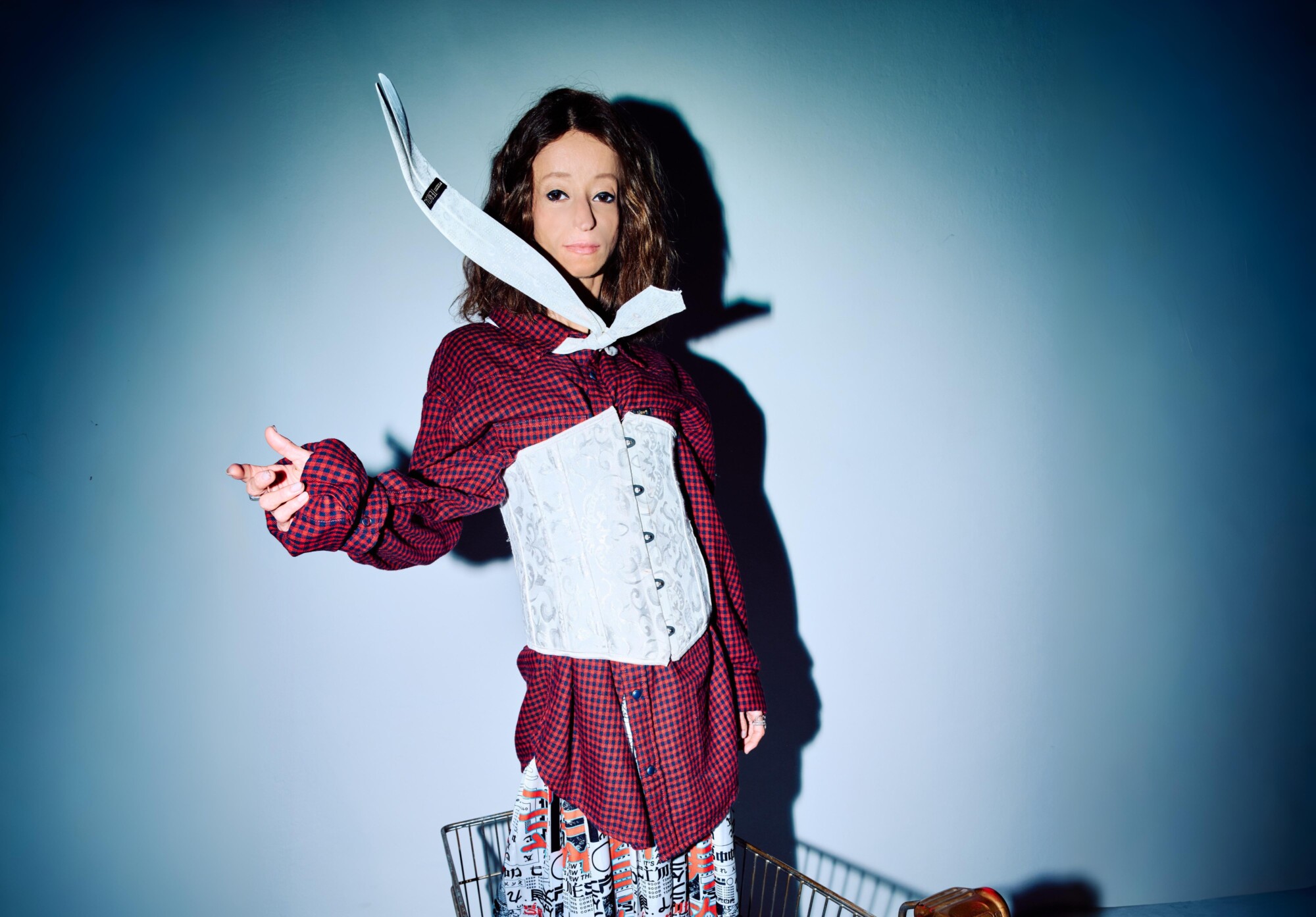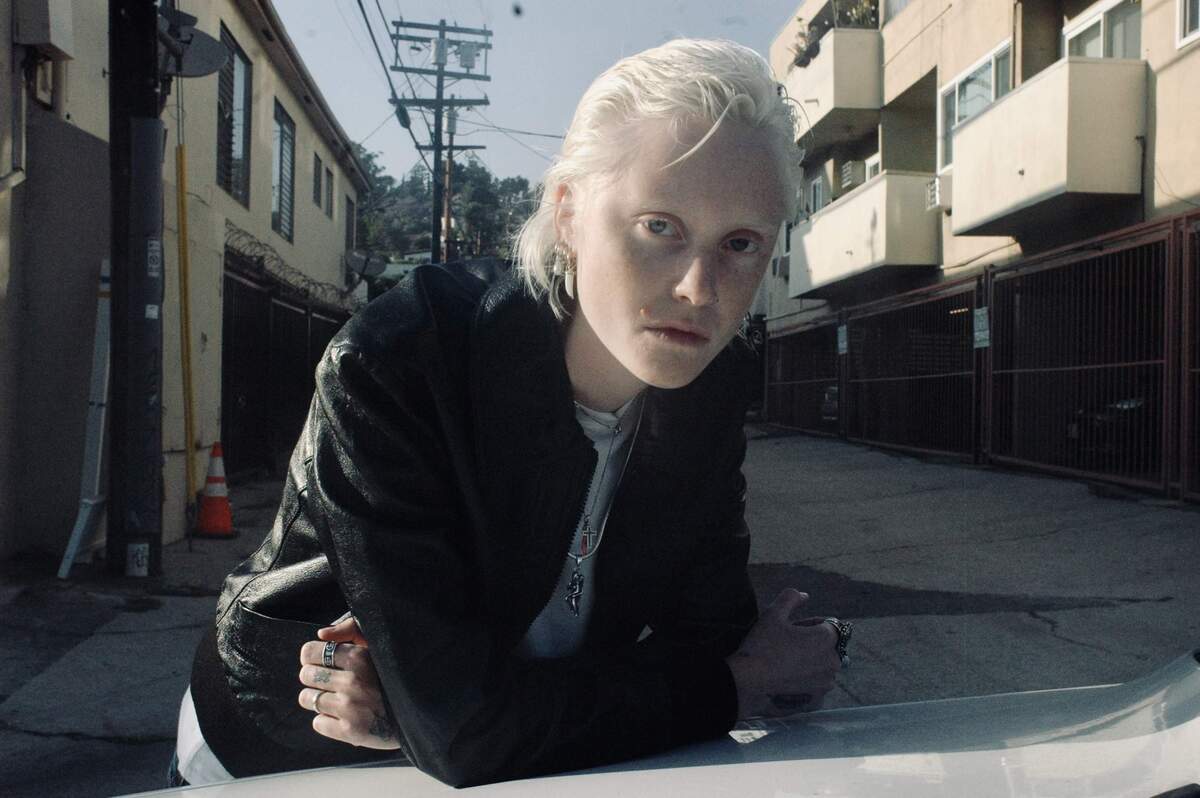Èlg interview with Laurent Gérard
Do you ask a banana tree why bananas taste
like they do?
like they do?
In this interview, 36 years old Frenchman
Laurent Gérard calls the music on his new album ‘Mauve Zone’ pocket symphonies, a ghost train journey, a mistery,
an illusion, a puzzle and a cartoon. All
correct.
Laurent Gérard calls the music on his new album ‘Mauve Zone’ pocket symphonies, a ghost train journey, a mistery,
an illusion, a puzzle and a cartoon. All
correct.
Stanley Kubrick once said that you don’t
make a movie with a camera, but in the editing room. Could I say the same thing
about your music: that recording is one thing, but that the real work is the
editing, making layers, constructing the recordings?
make a movie with a camera, but in the editing room. Could I say the same thing
about your music: that recording is one thing, but that the real work is the
editing, making layers, constructing the recordings?
Yes! You’re right. All my albums are
conceived like movies. Editing is very important. When recording an album I
create sonic objects with the same artificial approach used in studio films.
They are illusions. Albums recorded live are fantastic also, of course, but
it’s a completely different approach and up until now in my solo work the
sequences are created separately and I piece them together like a puzzle to
form an ensemble, looking for ways to find links. Everything is always linked
on a subconscious level. It is a well thought out yet empirical process which
would be very costly for classical film production. Kubrick was smart enough to
get the Warner studios to back him up financially for three years while he
developed ‘2001: Space Odyssey’. He had time to feel his way through it, which
is rare in Hollywood cinema.
conceived like movies. Editing is very important. When recording an album I
create sonic objects with the same artificial approach used in studio films.
They are illusions. Albums recorded live are fantastic also, of course, but
it’s a completely different approach and up until now in my solo work the
sequences are created separately and I piece them together like a puzzle to
form an ensemble, looking for ways to find links. Everything is always linked
on a subconscious level. It is a well thought out yet empirical process which
would be very costly for classical film production. Kubrick was smart enough to
get the Warner studios to back him up financially for three years while he
developed ‘2001: Space Odyssey’. He had time to feel his way through it, which
is rare in Hollywood cinema.
In one way, the audio horror you create is
kind of cartoonish and playful, but on the other hand, I also have the
impression: “here’s a perfectionist at work.”
kind of cartoonish and playful, but on the other hand, I also have the
impression: “here’s a perfectionist at work.”
I’ve always found humour and derision in
horror and anxiety in humour. They are interrelated, inseparable. Our anxiety
and fears are ridiculous, in a way, on a universal scale. We often laugh about
things that surpass us, that make us uncomfortable or give us vertigo. And cartoonish
perfectionism exists! Mel Blanc is a perfect example. His voice work on the Tex
Avery characters is very precise, almost maniacal! “That’s all
folks!”, Mel Blanc’s cath phrase, is actually on his tombstone in Los
Angeles.
horror and anxiety in humour. They are interrelated, inseparable. Our anxiety
and fears are ridiculous, in a way, on a universal scale. We often laugh about
things that surpass us, that make us uncomfortable or give us vertigo. And cartoonish
perfectionism exists! Mel Blanc is a perfect example. His voice work on the Tex
Avery characters is very precise, almost maniacal! “That’s all
folks!”, Mel Blanc’s cath phrase, is actually on his tombstone in Los
Angeles.
When I played this album for the first
time, I thought it sounded recognisable. What would you define as ‘your style’?
time, I thought it sounded recognisable. What would you define as ‘your style’?
I don’t know where it comes from or what it
is. I just really love working. All the doubting and discouragement and all the
transformations and illuminations that occur make what we call style. But than
again: we don’t ask banana trees why bananas taste like they do, do we? They’re
just bananas. They happen with time, molecule mingling and sunshine, bad luck
sometimes or maybe a very fruity need to stand out and feel different.
is. I just really love working. All the doubting and discouragement and all the
transformations and illuminations that occur make what we call style. But than
again: we don’t ask banana trees why bananas taste like they do, do we? They’re
just bananas. They happen with time, molecule mingling and sunshine, bad luck
sometimes or maybe a very fruity need to stand out and feel different.
Do you see Ghédalia Tazartès as an
influence or more as a colleague?
influence or more as a colleague?
Ghédalia is and always will be an
influence.We are excellent bar colleagues too.
influence.We are excellent bar colleagues too.
I had to smile when I heard the guitar solo
on the end of the A-side. A crappy tribute to Eddie Hazel’s solo in ‘Maggot
Brain’?
on the end of the A-side. A crappy tribute to Eddie Hazel’s solo in ‘Maggot
Brain’?
I know the ‘Maggot Brain’ solo well, it’s
an excellent track! My crappy guitar solo salutes him! But I cry tears of
sadness as it was not meant to be crappy but epic and beautiful. I will forever
be misunderstood.
an excellent track! My crappy guitar solo salutes him! But I cry tears of
sadness as it was not meant to be crappy but epic and beautiful. I will forever
be misunderstood.
You said you always find doing interviews
difficult, but especially for a record like this one. Why so?
difficult, but especially for a record like this one. Why so?
Because this record is a kind of mystery,
even for me.
even for me.
Your album has a dream kind of feeling (or
a nightmare, a well air conditioned nightmare): you hear an Englishman talking,
than a woman, than some field recordings, all connected by dark electronics on
the background, and you think: “What’s going on here?” What’s the
story? How are all these things connected?
a nightmare, a well air conditioned nightmare): you hear an Englishman talking,
than a woman, than some field recordings, all connected by dark electronics on
the background, and you think: “What’s going on here?” What’s the
story? How are all these things connected?
I love that idea of an air conditioned
nightmare. Norman Mailer used to describe the US in those terms. What I can say
now looking back on the elaboration of this ghost train journey is that the
general feeling for me was slimy and opaque and I was looking for light. That’s
what ties everything together.
nightmare. Norman Mailer used to describe the US in those terms. What I can say
now looking back on the elaboration of this ghost train journey is that the
general feeling for me was slimy and opaque and I was looking for light. That’s
what ties everything together.
Who are the different voices on the
record?
record?
There are three guests on this record:
Catherine Hershey as the “Top-down” priestess, than Dylan Nyoukis as
the narrator of the Lady Diana nightmare. And Alan “uncle Jim” Bishop
as the mad man who brings the storm before the calm on B-side.
Catherine Hershey as the “Top-down” priestess, than Dylan Nyoukis as
the narrator of the Lady Diana nightmare. And Alan “uncle Jim” Bishop
as the mad man who brings the storm before the calm on B-side.
The French voice is yours, I suppose?
The French voice is mine but at the
beginning of the B-side I speak in Mauvian, not French!
beginning of the B-side I speak in Mauvian, not French!
I remember once being in a Turkish bar with
you in Brussels. You got irritated by the music that was playing. You hated the
compressed sound, you said, and the dominant bass. It showed you are very much
aware of the sound and the music that surrounds you. Do you think that you are
more aware of this than other people? And do you see this as a plus or as a
negative thing?
you in Brussels. You got irritated by the music that was playing. You hated the
compressed sound, you said, and the dominant bass. It showed you are very much
aware of the sound and the music that surrounds you. Do you think that you are
more aware of this than other people? And do you see this as a plus or as a
negative thing?
I was probably a grumpy potato that day.
But yes I am very conscious of the sounds that surround me. Music that shuts up
silence gives me a headache. I counter it by singing songs in my head and
composing brain pocket symphonies. Sometimes in the metro I start tripping on
the mechanical rhythms it creates, and on the sounds of metal screeching. When
a metro musician with an accordion starts belting out “Besa me mucho”
it can mess up my inner groove but I’ll still give it a listen and help those
guys out with money when I can. It takes a lot of nerve to be faced with
indifference and play anyway. I don’t know if I have the same courage that they
do. I sometimes dream about playing and shouting in the street like a corner
preacher. I try to be as present as possible when I listen to a record in my
home. Otherwise I take John Cage’s advice: if I want to listen to music, I open
the window.
But yes I am very conscious of the sounds that surround me. Music that shuts up
silence gives me a headache. I counter it by singing songs in my head and
composing brain pocket symphonies. Sometimes in the metro I start tripping on
the mechanical rhythms it creates, and on the sounds of metal screeching. When
a metro musician with an accordion starts belting out “Besa me mucho”
it can mess up my inner groove but I’ll still give it a listen and help those
guys out with money when I can. It takes a lot of nerve to be faced with
indifference and play anyway. I don’t know if I have the same courage that they
do. I sometimes dream about playing and shouting in the street like a corner
preacher. I try to be as present as possible when I listen to a record in my
home. Otherwise I take John Cage’s advice: if I want to listen to music, I open
the window.
© Jonas Chéreau
Interview by Joeri Bruyninckx/2016
© Copyright http://psychedelicbaby.blogspot.com/2016
Array





